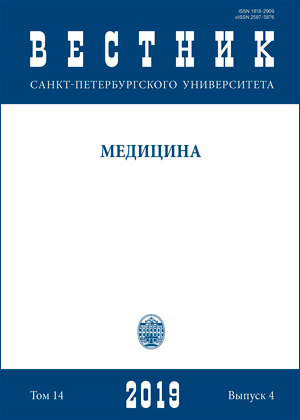Urbanization-related factors as triggers of the development of type 1 diabetes mellitus*
DOI:
https://doi.org/10.21638/spbu11.2019.421Abstract
The proportion of autoimmune pathology increases along with urbanization. A cohort retrospective prospective study was performed to analyze the prevalence of type I diabetes mellitus in 83 regions of the Russian Federation during the period from 2008 to 2017 and the influence of urbanization factors on type I diabetes mellitus incidence. The main urbanistic factor obtained during mathematical modeling contributing to the development and distribution of the incidence of type I diabetes mellitus is air pollution with solid dust particles, namely air emissions from the stationary sources, highways density and the number of buses. The urbanization factors are controlled and, therefore, many of the adverse effects on human health can be prevented by using organizational and methodological recommendations as well as new regulations on air pollutants.
Keywords:
geoepidemiology, autoimmune diseases, pollutions, type I diabetes mellitus, urbanization, solid dust particles
Downloads
References
References
Downloads
Published
How to Cite
Issue
Section
License
Articles of "Vestnik of Saint Petersburg University. Medicine" are open access distributed under the terms of the License Agreement with Saint Petersburg State University, which permits to the authors unrestricted distribution and self-archiving free of charge.




